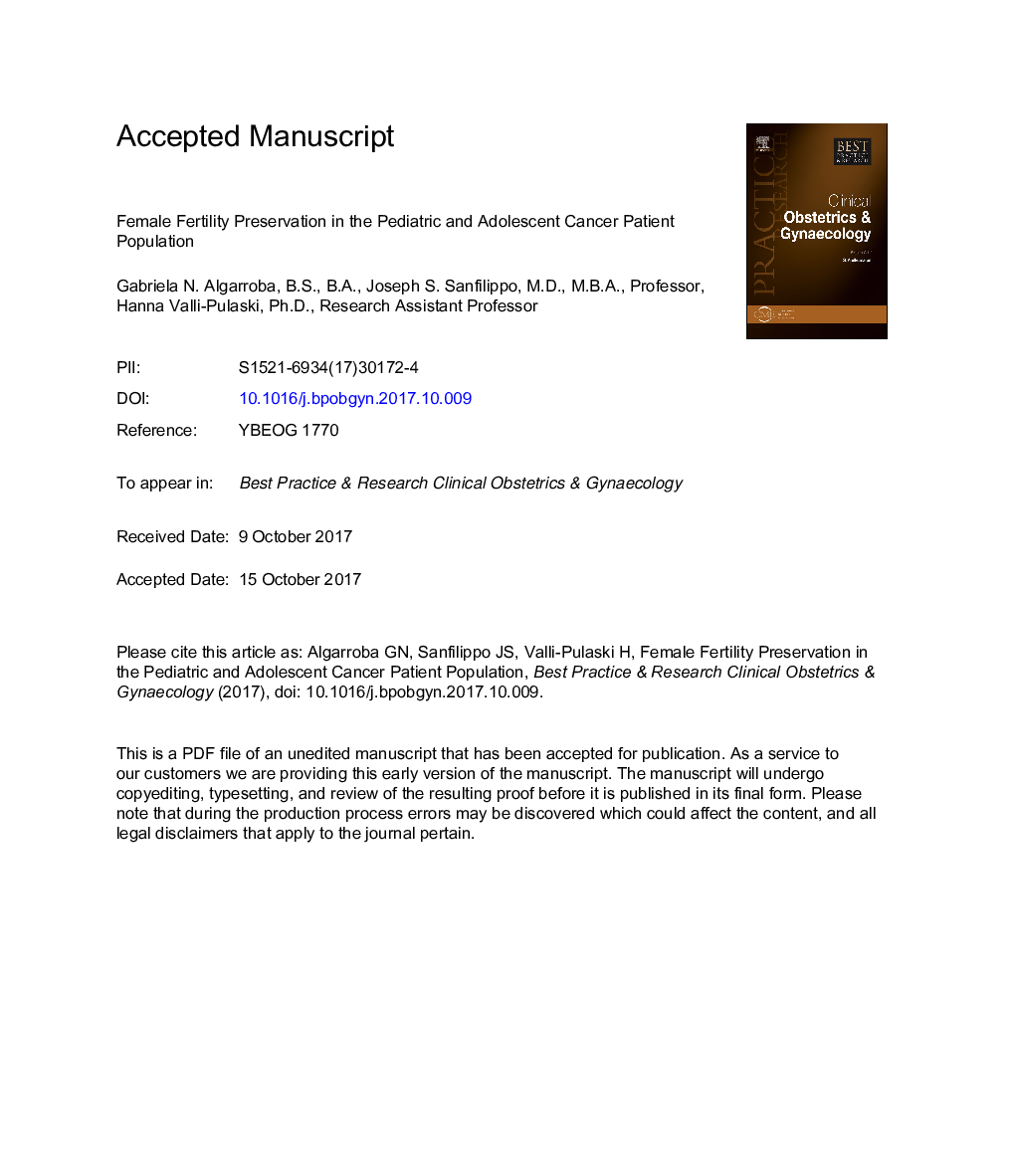| Article ID | Journal | Published Year | Pages | File Type |
|---|---|---|---|---|
| 8776527 | Best Practice & Research Clinical Obstetrics & Gynaecology | 2018 | 29 Pages |
Abstract
The 5-year survival rate for childhood cancer is over 80%, thereby increasing the number of young women facing infertility in the future because of the gonadotoxic effects of chemotherapy and radiation. The gonadotoxic effects of childhood cancer treatment vary by the radiation regimen and the chemotherapeutic drugs utilized. Although the American Society of Clinical Oncology guidelines recommend fertility preservation for all patients, there are several barriers and ethical considerations to fertility preservation in the pediatric and adolescent female population. Additionally, the fertility preservation methods for pre- and postpubertal females differ, with only experimental methods available for prepubertal females. We will review the risk of chemotherapy and radiation on female fertility, the approach to fertility preservation in the pediatric and adolescent female population, methods of fertility preservation for both pre- and postpubertal females, barriers to fertility preservation, cost, and psychological and ethical considerations.
Related Topics
Health Sciences
Medicine and Dentistry
Obstetrics, Gynecology and Women's Health
Authors
Gabriela N. BS, BA, Joseph S. (Professor), Hanna (Research Assistant Professor),
